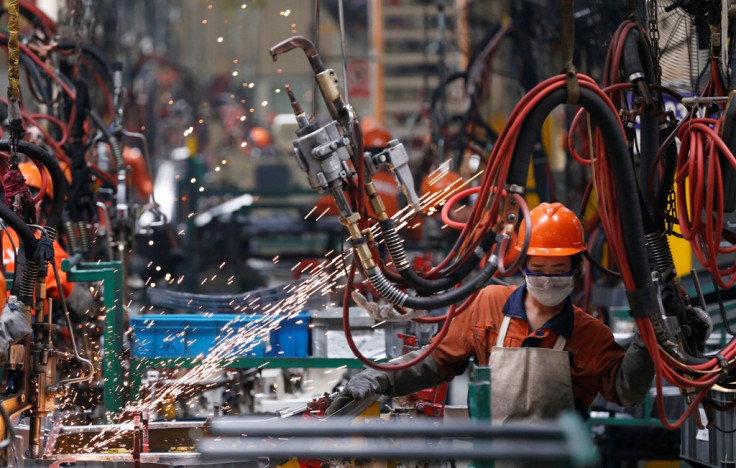China and Japan Factory Output Edges Up, Shows PMI

Factory output in China and Japan has improved a little in May but overall manufacturing growth still contracted, according to two separate surveys monitoring manufacturing activity in the world's second and third largest economies.
The HSBC/Markit Flash China Manufacturing Purchasing Managers Index (PMI) rose to 49.7 in May from a final reading of 48.1 in April.
The preliminary reading of China's manufacturing sector in May beat the median forecast of 48.1 in a Reuters's poll, but came in just below the 50-point threshold that divides growth from contraction.
The reading showed that China's factory sector logged its best performance in five months in May.
Meanwhile, the Markit/JMMA flash Japan Manufacturing Purchasing Managers Index rose to a seasonally adjusted 49.9 in May from April's final reading of 49.4.
The preliminary reading showed Japanese manufacturing activity also contracted in May but at a slower pace, signalling a tentative recovery.
Asian markets get boost
Together, results from the two surveys boosted investor sentiment in most Asian markets with the Japanese Nikkei 225 finishing 2.11% higher on 22 May. The benchmark Shanghai Composite share average ended 0.18% lower, however.
Hongbin Qu, chief economist for China at HSBC said in a statement: "...The improvement [in China] was broad-based with both new orders and new export orders back in expansionary territory.
"Disinflationary pressures also eased over the month and output prices increased for the first time since November 2013. However, the employment index fell further to 47.3, which implies that [May's] uptick in sentiment has not yet filtered through to the labour market."
"Some tentative signs of stabilisation are emerging, partly as a result of the recent mini-stimulus measures and lower borrowing costs. But downside risks to growth remain, particularly as the property market continues to cool. We think more policy easing is needed to put a floor under growth in the coming months," Hongbin added.
Chris Williamson, chief economist at Markit, said in a statement: "The [Japanese] manufacturing sector showed welcome signs of stabilising after the steep downturn seen in April, but producers are clearly still struggling as demand has been hit by the April 1st tax hike. Of additional concern is the fall in export orders, which is a sign of softening demand in key trading partners. GDP growth is consequently likely to have weakened significantly in the second quarter.
"While many companies signalled optimism that the slowdown would be temporary, the cutting of prices and downturn in job creation are signs the sector is preparing for continued tough conditions in the coming months. The extent to which the economy can rebound in the second half of the year remains highly uncertain at this stage."
Bill Adams, senior international economist for PNC Financial Services said in a note to clients: "...Stronger output and orders in China, coupled with rising stocks of purchases, suggest the inventory cycle may have turned to be at least neutral for growth in May, and maybe even positive. Japan's upturn comes after a huge post-tax hike drop in April.
"Looking at China as well as Japan, the Asian manufacturing business cycle could be stabilizing a bit in May after a tough April, but the improvement is modest.
"The HSBC PMI flash release could be a first sign that China is getting on track for real GDP growth close to the government's 'about 7.5%' target in the second-quarter. With growth consolidating, Chinese domestic economic conditions seem favourable for a stronger yuan. However, political tensions with the US could be a reason for the Chinese government to prevent market forces from prevailing and strengthening their currency.
"The Japanese economy is contracting as expected in the second quarter after a huge 5.9 percent annualized increase in real GDP in the first quarter. Although it still points to marginal contraction, the Japan PMI moved in the right direction in the May flash release. Japan's economy is contracting in the second quarter, but isn't bad enough to push the Bank of Japan to intensify its stimulus program."
© Copyright IBTimes 2025. All rights reserved.






















